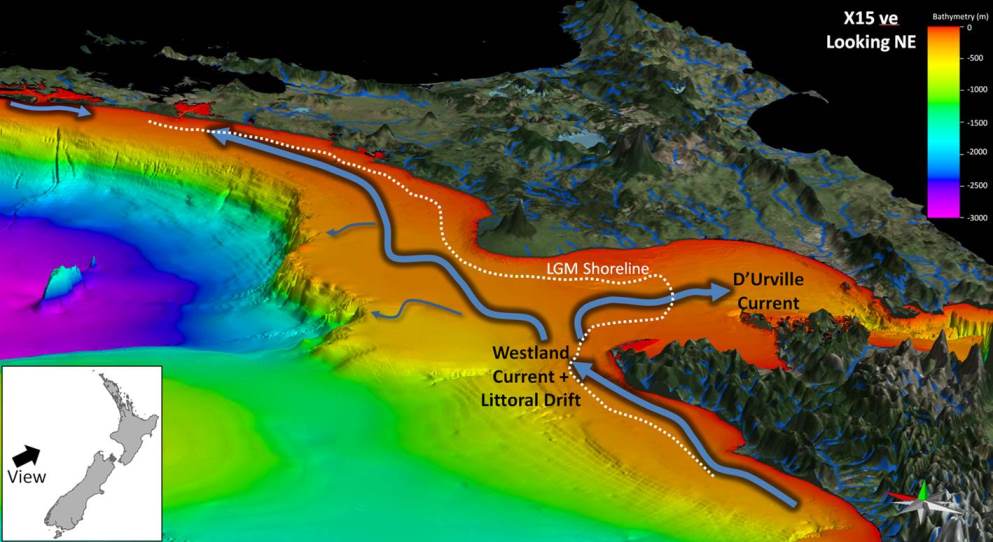Giant Foresets, Taranaki Basin, New Zealand
Sequence architecture and lateral variations along a 300km shelf margin
Sequence stratigraphic models are conventionally based upon transport of sediments from a terrestrial source via a fluvial distributary system to accommodation sinks on the shelf, slope and basin floor. As hydrocarbon exploration moves to exploit deepwater regions in basins around the world, knowledge of the controls on the nature and distribution of deep-water deposits should help to increase exploration success rates. Key to this is an improved understanding of the along margin variations in clinoform and sequence architecture. To address this we focus on 300km of the Taranaki Basin shelf margin, utilising an extensive catalogue of borehole calibrated 2D & 3D seismic datasets.
The present day Taranaki Basin is located offshore to the west of New Zealand’s North Island in a retro-arc setting to the Kermadec–Hikurangi subduction margin. Up to 9 km of sediments record the multiphase history of the basin from Late Cretaceous to Recent across two distinct structural domains, the Eastern Mobile Belt and Western Stable Platform (WSP). In particular we focus on the Plio-Pleistocene aged Giant Foresets Formation, a strongly progradational set of shelf margin scale clinoforms up to 1500m in height.

